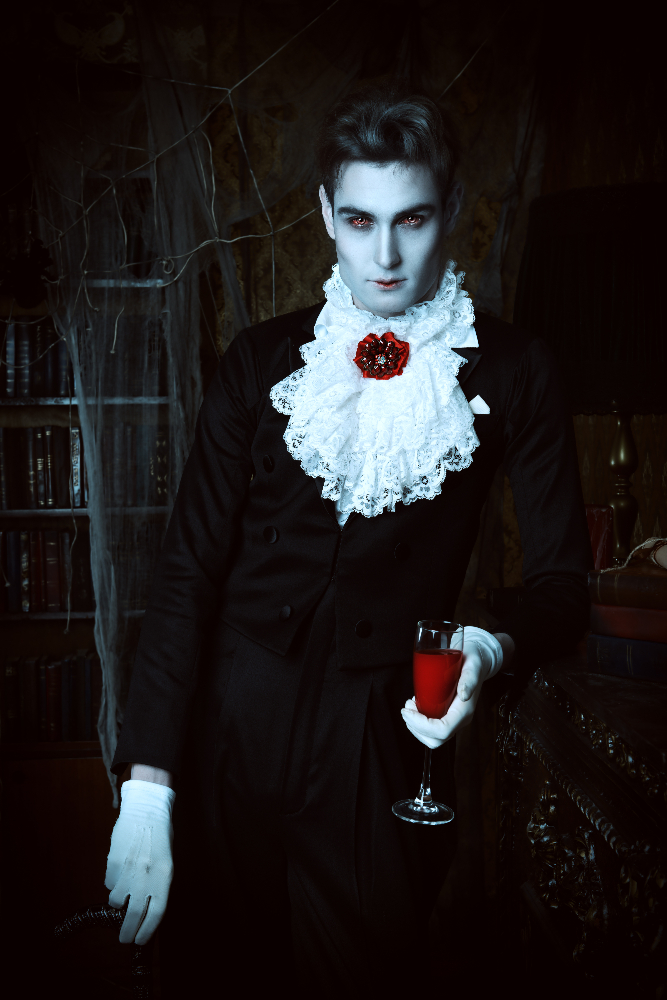
Dracula – The Novel

Dracula is an 1897 Gothic horror novel by Irish author Bram Stoker. It introduced the character of Count Dracula, and established many conventions of subsequent vampire fantasy. The novel tells the story of Dracula’s attempt to move from Transylvania to England so that he may find new blood and spread the undead curse, and of the battle between Dracula and a small group of men and a woman led by Professor Abraham Van Helsing.
Dracula has been assigned to many literary genres including vampire literature, horror fiction, the gothic novel, and invasion literature. The novel has spawned numerous theatrical, film, and television interpretations.
- Plot
- Characters
- Background
- Publication
- Historical and Geographical References
- Official Derivative Publications
The story is told in an epistolary format, as a series of letters, diary entries, newspaper articles, and ships’ log entries, whose narrators are the novel’s protagonists, and occasionally supplemented with newspaper clippings relating events not directly witnessed. The events portrayed in the novel take place chronologically and largely in England and Transylvania during the 1890s and all transpire within the same year between 3 May and 6 November. A short note is located at the end of the final chapter written 7 years after the events outlined in the novel.
The tale begins with Jonathan Harker, a newly qualified English solicitor, visiting Count Dracula at his castle in the Carpathian Mountains on the border of Transylvania, Bukovina, and Moldavia, to provide legal support for a real estate transaction overseen by Harker’s employer, Mr. Peter Hawkins of Exeter. At first enticed by Dracula’s gracious manners, Harker soon realizes that he is Dracula’s prisoner. Wandering the Count’s castle against Dracula’s admonition, Harker encounters three female vampires, called “the sisters”, from whom he is rescued by Dracula. Harker soon realizes that Dracula himself is also a vampire. After the preparations are made, Dracula leaves Transylvania and abandons Harker to the sisters. Harker barely escapes from the castle with his life.
Dracula boards a Russian ship, the Demeter, taking along with him boxes of Transylvanian soil, which he required in order to regain his strength. Not long afterward, the ship having weighed anchor at Varna, runs aground on the shores of Whitby in the east coast of England. The captain’s log narrates the gradual disappearance of the entire crew, until the captain alone remained, himself bound to the helm to maintain course. An animal resembling “a large dog” is seen leaping ashore. The ship’s cargo is described as silver sand and 50 boxes of “mould”, or earth, from Transylvania. It is later learned that Dracula successfully purchased multiple estates under the alias ‘Count De Ville’ throughout London and devised to distribute the 50 boxes to each of them utilizing transportation services as well as moving them himself. He does this to secure for himself “lairs” and the 50 boxes of earth would be used as his graves which would grant safety and rest during times of feeding and replenishing his strength.
Harker’s fiancée, Mina Murray, is staying with her friend Lucy Westenra, who is holidaying in Whitby. Lucy, receives three marriage proposals from Dr. John Seward, Quincey Morris, and Arthur Holmwood (the son of Lord Godalming who later obtains the title himself. Lucy accepts Holmwood’s proposal while turning down Seward and Morris, but all remain friends. Dracula communicates with Seward’s patient, Renfield, an insane man who wishes to consume insects, spiders, birds, and rats to absorb their “life force”. Renfield is able to detect Dracula’s presence and supplies clues accordingly.
Soon Dracula is indirectly shown to be stalking Lucy. As time passes, she begins to suffer from episodes of sleepwalking and dementia, as witnessed by Mina. When Lucy begins to waste away suspiciously, Seward invites his old teacher, Abraham Van Helsing, who immediately determines the true cause of Lucy’s condition. He refuses to disclose it, but diagnoses her with acute blood-loss. Van Helsing prescribes numerous blood transfusions to which he, Seward, Quincey, and Arthur all contribute over time. Van Helsing also prescribes garlic flowers to be placed throughout her room and weaves a necklace of withered garlic blossoms for her to wear. However, she continues to waste away – appearing to lose blood every night. While both doctors are absent, Lucy and her mother are attacked by a wolf and Mrs. Westenra, who has a heart condition, dies of fright. Van Helsing attempts to protect her with garlic, but fate thwarts him each night, whether Lucy’s mother removes the garlic from her room, or Lucy herself does so in her restless sleep. The doctors have found two small puncture marks about her neck, which Dr. Seward is at a loss to understand. After Lucy dies, Van Helsing places a golden crucifix over her mouth, ostensibly to delay or prevent Lucy’s vampiric conversion. Fate conspires against him again when Van Helsing finds the crucifix in the possession of one of the servants who stole it off Lucy’s corpse.
Following Lucy’s death and burial, the newspapers report children being stalked in the night by a “bloofer lady” (i.e., “beautiful lady”). Van Helsing, knowing Lucy has become a vampire, confides in Seward, Lord Godalming, and Morris. The suitors and Van Helsing track her down and, after a confrontation with her, stake her heart, behead her, and fill her mouth with garlic. Around the same time, Jonathan Harker arrives from Budapest, where Mina marries him after his escape, and he and Mina join the campaign against Dracula.
The vampire hunters stay at Dr. Seward’s residence, holding nightly meetings and providing reports based on each of their various tasks. Mina discovers that each of their journals and letters collectively contain clues to which they can track him down. She tasks herself with collecting them, researching newspaper clippings, fitting the most relevant entries in chronological order and typing out copies to distribute to each of the party which they are to study. Jonathan Harker tracks down the shipments of boxed graves and the estates which Dracula has purchased in order to store them. Van Helsing conducts research along with Dr. Seward to analyze the behaviour of their patient Renfield, who they learn is directly influenced by Dracula. They also research historical events, folklore, and superstitions from various cultures to understand Dracula’s powers and weaknesses. Van Helsing also establishes a criminal profile on Dracula in order to better understand his actions and predict his movements. Arthur Holmwood’s fortune assists in funding the entire operation and expenses. As they discover the various properties Dracula had purchased, the male protagonists’ team up to raid each property and are several times confronted by Dracula. As they discover each of the boxed graves scattered throughout London, they pry them open to place and seal wafers of sacramental bread within. This act renders the boxes of earth completely useless to Dracula as he is unable to open, enter or further transport them.
After Dracula learns of the group’s plot against him, he attacks Mina on three occasions, and feeds Mina his own blood to control her. This curses Mina with vampirism and changes her, but does not completely turn her into a vampire. Van Helsing attempts to bless Mina through prayer and by placing a wafer of sacrament against her forehead, but it burns her upon contact leaving a wretched scar. Under this curse, Mina oscillates from consciousness to a semi-trance during which she perceives Dracula’s surroundings and actions. Van Helsing is able to use hypnotism twice a day, at dawn and at sunset, to put her into this trance to further track Dracula’s movements. Mina, afraid of Dracula’s link with her, urges the team not to tell her their plans out of fear that Dracula will be listening. After the protagonists discover and sterilize 49 boxes found throughout his lairs in London, they learn that Dracula has fled with the missing 50th box back to his castle in Transylvania. They pursue him under the guidance of Mina. They split up into teams once they reach Europe; Van Helsing and Mina team up to locate the castle of Dracula while the others attempt to ambush the boat Dracula is using to reach his home. Van Helsing raids the castle and destroys the vampire “sisters”. Upon discovering Dracula being transported by Gypsies, the three teams converge and attack the caravan carrying Dracula in the 50th box of Earth. After dispatching many Gypsies who were sworn to protect the Count, Harker shears Dracula through the throat with a kukri knife, while the mortally wounded Quincey stabs the Count in the heart with a Bowie knife. Dracula crumbles to dust, and Mina is freed from her curse of vampirism, as the scar on her forehead disappears. Soon after, Quincey dies from his wounds.
The book closes with a note left by Jonathan Harker seven years after the events of the novel, detailing his married life with Mina and the birth of their son, whom they name after all four members of the party, but address as “Quincey”. Quincey is depicted sitting on the knee of Van Helsing as they recount their adventure. Seward and Arthur have each gotten married.
Deleted Ending
A small section was removed from a draft of the final chapter, in which Dracula’s castle falls apart as he dies, hiding the fact that vampires were ever there.
As we looked there came a terrible convulsion of the earth so that we seemed to rock to and fro and fell to our knees. At the same moment with a roar which seemed to shake the very heavens the whole castle and the rock and even the hill on which it stood seemed to rise into the air and scatter in fragments while a mighty cloud of black and yellow smoke volume on volume in rolling grandeur was shot upwards with inconceivable rapidity.
Then there was a stillness in nature as the echoes of that thunderous report seemed to come, as with the hollow boom of a thunder-clap – the long reverberating roll which seems as though the floors of heaven shook. Then down in a mighty ruin, falling whence they rose came the fragments that had been tossed skywards in the cataclysm.
From where we stood it seemed as though the one fierce volcano burst had satisfied the need of nature and that the castle and the structure of the hill had sunk again into the void. We were so appalled with the suddenness and the grandeur that we forgot to think of ourselves.
— Deleted excerpt from the original Dracula manuscript
Click links below to view character information on Wikipedia.
- Count Dracula: A Transylvanian noble who has purchased a house in London.
- Jonathan Harker: A solicitor sent to do business with Count Dracula; Mina’s fiancé and prisoner in Dracula’s castle.
- Wilhelmina “Mina” Harker(née Murray): A schoolteacher and Jonathan Harker’s fiancée (later his wife).
- Arthur Holmwood: Lucy’s suitor and later fiancé. He inherits the title of Lord Godalming upon his father’s death.
- Quincey Morris: An American cowboy and explorer; and one of Lucy’s suitors.
- Renfield: A patient at Seward’s insane asylum who has come under the influence of Dracula.
- John Seward: A doctor; one of Lucy’s suitors and a former student of Van Helsing.
- Abraham Van Helsing: A Dutch doctor, lawyer and professor; John Seward’s teacher.
- “Weird Sisters”: Three siren-like vampire women who serve Dracula. In some of the later adaptations to stage and screen, they are referred to as the Brides of Dracula.
- Lucy Westenra: A 19-year-old aristocrat; Mina’s best friend; Arthur’s fiancée and Dracula’s first victim.
Dracula is a work of fiction, but it does contain some historical references; although it is a matter of conjecture and debate as to how much historical connection was deliberate on Stoker’s part.
Attention was drawn to the supposed connections between the historical Transylvanian-born Vlad III Dracula (also known as Vlad Tepes) of Wallachia and Bram Stoker’s fictional Dracula, following the publication of In Search of Dracula by Radu Florescu and Raymond McNally in 1972. During his main reign (1456–1462), “Vlad the Impaler” is said to have killed from 40,000 to 100,000 European civilians (political rivals, criminals, and anyone that he considered “useless to humanity”), mainly by impaling. The sources depicting these events are records by Saxon settlers in neighbouring Transylvania who had frequent clashes with Vlad III. Vlad III is revered as a folk hero by Romanians for driving off the invading Ottoman Turks, of whom his impaled victims are said to have included as many as 100,000. There is no solid evidence that the Count in the novel was modelled on Vlad the Impaler of Wallachia. At most, Stoker borrowed only the name Dracula and “scraps of miscellaneous information” about Romanian history, according to one expert, Elizabeth Miller; as well, and there are no comments about him in the author’s working notes.
Historically, the name “Dracula” is derived from a Chivalric order called the Order of the Dragon founded by Sigismund of Luxembourg (then king of Hungary) to uphold Christianity and defend the Holy Roman Empire against the Ottoman Turks. Vlad II Dracul, father of Vlad III, was admitted to the order around 1431, after which Vlad II wore the emblem of the order and later, as ruler of Wallachia, his coinage bore the dragon symbol, from which the name “Dracula” is derived since “dracul” in Romanian means “the dragon”. People of Wallachia only knew voievod (prince) Vlad III as Vlad Țepeș (the Impaler). The name “Dracula” became popular in Romania after publication of Stoker’s book. Contrary to popular belief, the name Dracula does not translate to “son of the devil” in Romanian, which would be “fiul diavolului”.
Stoker came across the name Dracula in his reading on Romanian history and chose this to replace the name (Count Wampyr) originally intended for his villain. Some Dracula scholars led by Elizabeth Miller argue that Stoker knew little of the historic Vlad III except for the name “Dracula” in addition to a few bits of Romanian history. Stoker mentions that his Dracula fought against the Turks and was later betrayed by his brother, historical facts in the novel which point to Vlad III:
Who was it but one of my own race who as Voivode crossed the Danube and beat the Turk on his own ground? This was a Dracula indeed! Woe was it that his own unworthy brother, when he had fallen, sold his people to the Turk and brought the shame of slavery on them! Was it not this Dracula, indeed, who inspired that other of his race who in a later age again and again brought his forces over the great river into Turkey-land; who, when he was beaten back, came again, and again, though he had to come alone from the bloody field where his troops were being slaughtered, since he knew that he alone could ultimately triumph! (Chapter 3, pp. 19)
The Count’s identity is later speculated on by Professor Van Helsing:
He must, indeed, have been that Voivode Dracula who won his name against the Turk, over the great river on the very frontier of Turkey-land. (Chapter 18, p. 145)
Many of Stoker’s biographers and literary critics have found strong similarities to the earlier Irish writer Sheridan Le Fanu’s classic of the vampire genre Carmilla. In writing Dracula, Stoker may also have drawn on stories about the sídhe, some of which feature blood-drinking women. The Irish legend of Abhartach has also been suggested as a source. It is also thought probable that his mother’s stories of events during the severe cholera outbreak in Sligo in 1832 were influential. Particularly themes of being buried while alive.
In 1983, McNally additionally suggested that Stoker was influenced by the history of Hungarian Countess Elizabeth Bathory, who allegedly tortured and killed between 36 and 700 young women. It was later a commonly believed rumor that she committed
these crimes to bathe in their blood, believing that this preserved her youth. Báthory’s castle was also located in the Carpathian Mountains, just as Dracula’s, albeit in a different region.
In her book The Essential Dracula, Clare Haword–Maden suggested that the castle of Count Dracula was inspired by Slains Castle, at which Bram Stoker was a guest of the 19th Earl of Erroll. According to Miller, he first visited Cruden Bay in 1893, three years after work had begun on Dracula. Haining and Tremaine maintain that, during this visit, Stoker was especially impressed by Slains Castle’s interior and the surrounding landscape. Miller and Leatherdale question the stringency of this connection.
Possibly, Stoker was not inspired by a real edifice at all, but by Jules Verne’s novel The Carpathian Castle (1892) or Anne Radcliffe’s The Mysteries of Udolpho (1794). A third possibility is that he copied information about Kemény Castle at Vécs from one of his sources on Transylvania, the book by Major E.C. Johnson. A further option is that Stoker saw an illustration of Castle Bran (Törzburg) in the book on Transylvania by Charles Boner, or read about it in the books by Mazuchelli or Crosse.
Many of the scenes in Whitby and London are based on real places that Stoker frequently visited, although he distorts the geography for the sake of the story in some cases. One scholar has suggested that Stoker chose Whitby as the site of Dracula’s first appearance in England because of the Synod of Whitby, given the novel’s preoccupation with timekeeping and calendar disputes.
Daniel Farson, Leonard Wolf, and Peter Haining have suggested that Stoker received much historical information from Ármin Vámbéry, a Hungarian professor whom he met at least twice. Miller argues, “there is nothing to indicate that the conversation included Vlad, vampires, or even Transylvania”, and “furthermore, there is no record of any other correspondence between Stoker and Vámbéry, nor is Vámbéry mentioned in Stoker’s notes for Dracula.”
“Dracula’s Guest”
Main article: Dracula’s Guest
The short story “Dracula’s Guest” was posthumously published in 1914, two years after Stoker’s death. It was, according to most contemporary critics, the deleted first (or second) chapter from the original manuscript and the one which gave the volume its name, but which the original publishers deemed unnecessary to the overall story.
“Dracula’s Guest” follows an unnamed Englishman traveller as he wanders around Munich before leaving for Transylvania. It is Walpurgis Night and the young Englishman foolishly leaves his hotel, in spite of the coachman’s warnings, and wanders through a dense forest alone. Along the way, he feels that he is being watched by a tall and thin stranger (possibly Count Dracula).
The short story climaxes in an old graveyard where the Englishman, caught in a blizzard, takes refuge in the marble tomb of “Countess Dolingen of Gratz”. Within the tomb, he sees the Countess—apparently asleep and healthy—but before he can investigate further, a mysterious force throws him clear of the tomb. A lightning bolt, then strikes the tomb, destroying it and incinerating the undead screaming countess. The Englishman then loses consciousness. He awakens to find a “gigantic” wolf lying on his chest and licking at his throat; however, the wolf merely keeps him warm and protects him until help arrives.
When the Englishman is finally taken back to his hotel, a telegram awaits him from his expectant host Dracula, with a warning about “dangers from snow and wolves and night”. The Swedish scholar Rickard Berghorn noted that the description of the blonde countess in Dracula’s Guest closely resembled the description of Josephine in the Powers of Darkness, which he used to argue that the countess and Josephine were meant to be the same character.
Powers of Darkness
Main article: Powers of Darkness
In 1901, Dracula was translated into Icelandic by Valdimar Ásmundsson under the title Makt Myrkranna (Powers of Darkness) with a preface written by Stoker. Not until 2014 was it noticed that Makt Myrkranna differed significantly from Stoker’s version of Dracula. The characters had different names, the book was shorter and there was more emphasis on sex than in the English version. The Dutch scholar Hans Corneel de Roos wrote: “Although Dracula received positive reviews in most newspapers of the day…the original novel can be tedious and meandering….Powers of Darkness, by contrast, is written in a concise, punchy style; each scene adds to the progress of the plot.”[ In Makt Myrkranna, Dracula is in contact with various ambassadors in what is hinted at is a bid for world domination. The majority of Makt Myrkranna concerns Thomas Harker’s (as Jonathan Harker is called here) stay at Dracula’s castle in Transylvania, with the rest of novel being a rushed and barely fleshed out story.
De Roos has argued that the differences between the English original of Dracula and the Icelandic version were not due to changes made by Ásmundsson, but rather that he was using a different, older manuscript of Dracula provided to him by Stoker, which the latter had discarded for the English version. De Roos has argued that some aspects Makt Myrkranna were due to Ásmundsson and other aspects were parts of Dracula that Stoker had removed due to concerns about British censorship.
Dracula the Un-dead
Main article: Dracula the Un-dead
In 2009, an official sequel was published, written by Bram Stoker’s great grand-nephew Dacre Stoker and Ian Holt.
Dracul
Dacre Stoker and J. D. Barker will write a prequel to Dracula titled Dracul. An interpretation of the missing 101 pages of the original novel, it was pieced together from Bram Stoker’s editorial notes, artifacts, and journals.
Vlad III Dracula, aka Vlad the Impaler
Dracula & Mina an epic love story
Further information: Dracula in popular culture
The story of Dracula has been the basis for numerous films and plays. Stoker himself wrote the first theatrical adaptation, which was presented at the Lyceum Theatre on 18 May 1897 under the title Dracula, or The Undead shortly before the novel’s publication and performed only once, in order to establish his own copyright for such adaptations. This adaptation was first published only a century later in October 1997 The first motion picture to feature Dracula was Dracula’s Death, produced in Hungary in 1921. The now-lost film, however, was not an adaptation of Stoker’s novel, but featured an original story.
F. W. Murnau’s unauthorised film adaptation Nosferatu was released in 1922, and the popularity of the novel increased considerably, owing to an attempt by Stoker’s widow to have the film removed from public circulation. Prana Film, the production company, had been unable to obtain permission to adapt the story from Bram’s widow, Florence Stoker, so screenwriter Henrik Galeen was told to alter numerous details to avoid legal trouble. Galeen transplanted the action of the story from 1890s England to 1830s Germany and reworked several characters, dropping some (such as Lucy and all three of her suitors), and renaming others (Dracula became Orlok, Jonathan Harker became Thomas Hutter, Mina became Ellen, and so on). This attempt failed to avoid a court case, however; Florence Stoker sued Prana Film, and all copies of the film were ordered to be destroyed. However, the company was bankrupt, and Stoker only recovered her legal fees in damages. Some copies survived and found their way into theatres. Eventually, Florence Stoker gave up the fight against public displays of the film. Subsequent re-releases of the film have typically undone some of the changes, such as restoring the original character names (a practice also followed by Werner Herzog in his 1979 remake of Murnau’s film Nosferatu the Vampyre).
Florence Stoker licensed the story to playwright Hamilton Deane, whose 1924 stage play adaptation toured England for several years before settling down in London. In 1927, American stage producer Horace Liveright hired John L. Balderston to revise Deane’s script in advance of its American premiere. Balderston significantly compressed the story, most notably consolidating or removing several characters. The Deane play and its Balderston revisions introduced an expanded role and history for Renfield, who now replaced Jonathan Harker as Dracula’s solicitor in the first part of the story; combined Mina Harker and Lucy Westenra into a single character (named Lucy); and omitted both Arthur Holmwood and Quincey Morris entirely. When the play premiered in New York, it was with Bela Lugosi in the title role, and with Edward van Sloan as Abraham Van Helsing, roles which both actors (as well as Herbert Bunston as Dr. Seward) reprised for the English-language version of the 1931 Universal Studios film production. The 1931 film was one of the most commercially successful adaptations of the story to date; it and the Deane/Balderston play that preceded it set the standard for film and television adaptations of the story, with the alterations to the novel becoming standard for later adaptations for decades to come. Universal Studios continued to feature the character of Dracula in many of their horror films from the 1930s and 1940s.
Christopher Lee as the title character in Dracula (1958)
In 1958, British film company Hammer Film Productions followed the success of its The Curse of Frankenstein from the previous year with Dracula, released in the US as Horror of Dracula, directed by Terence Fisher. Fisher’s production featured Christopher Lee as Dracula and Peter Cushing as Van Helsing. It was an international hit for Hammer Film, and Lee fixed the image of the fanged vampire in popular culture. Both Lee and Cushing reprised their roles multiple times over the next decade and a half, concluding with The Legend of the 7 Golden Vampires (with Cushing but not Lee) in 1974. Christopher Lee also took on the role of Dracula in Count Dracula, a 1970 Spanish-Italian-German co-production notable for its adherence to the plot of the original novel. Playing the part of Renfield in that version was Klaus Kinski, who later played Dracula himself in 1979’s Nosferatu the Vampyre.
In 1977, the BBC made Count Dracula, a 155-minute adaptation for television starring Louis Jourdan. Later film adaptations include John Badham’s 1979 Dracula, starring Frank Langella and inspired by the 1977 Broadway revival of the Deane/Hamilton play, and Francis Ford Coppola’s 1992 Bram Stoker’s Dracula, starring Gary Oldman. The character of Count Dracula has remained popular over the years, and many films have used the character as a villain, while others have named him in their titles, including Dracula’s Daughter and The Brides of Dracula. As of 2009, an estimated 217 films feature Dracula in a major role, a number second only to Sherlock Holmes (223 films). Many of these appearances are not adaptations of Stoker’s novel, but merely feature the character in an unrelated story.
- Vampire literature
- Church of Saint Mary, Whitby
- List of contemporary epistolary novels
- Bloodline (Cary novel)
- The Book of Renfield: A Gospel of Dracula, a fictional diary written by Renfield
- Dracula sequence, stories from Dracula’s point of view
- Clinical vampirism
- Bibliography of works on Dracula
- Davison, Carol Margaret (1997). Bram Stoker’s Dracula: Sucking Through the Century, 1897–1997. Toronto, Ontario: Dundurn. ISBN 9781554881055.
- Dalby, Richard and Hughes, William. Bram Stoker: A Bibliography (Westcliff-on-Sea: Desert Island Books, 2005)
- Frayling, Christopher. Vampyres: Lord Byron to Count Dracula (1992) ISBN 0-571-16792-6
- Eighteen-Bisang, Robert and Miller, Elizabeth. Bram Stoker’s Notes for Dracula: A Facsimile Edition Toronto: McFarland, 2008, ISBN 978-0-7864-3410-7
- Hughes, William. Beyond Dracula: Bram Stoker’s Fiction and its Cultural Contexts (Basingstoke: Macmillan, 2000)
- McNally, Raymond T. & Florescu, Radu. In Search of Dracula. Houghton Mifflin Company, 1994. ISBN 0-395-65783-0
- Miller, Elizabeth. Dracula: Sense & Nonsense. 2nd ed. Desert Island Books, 2006. ISBN 1-905328-15-X
- Schaffer, Talia. A Wilde Desire Took Me: the Homoerotic History of Dracula, in: ELH – Volume 61, Number 2 (1994), pp. 381–425.
- Senf, Carol. Science and Social Science in Bram Stoker’s Fiction (Greenwood, 2002).
- Senf, Carol. Dracula: Between Tradition and Modernism (Twayne, 1998).
- Spencer, Kathleen. Purity and Danger: Dracula, the Urban Gothic, and the Late Victorian Degeneracy Crisis, in: ELH – Volume 59, Number 1 (1992), pp. 197–225.
- Wolf, Leonard. The Essential Dracula. ibooks, inc., 2004. ISBN 0-7434-9803-8
- Klinger, Leslie S. The New Annotated Dracula. W.W. Norton & Co., 2008. ISBN 0-393-06450-6
- Waters, Colin Gothic Whitby. History Press, 2009 – ISBN 0-7524-5291-6
Sources used:
-
-
-
-
- Link: https://en.wikipedia.org/wiki/Dracula The original version of this page is from Wikipedia, you can request edits of this page by sending a message. Text is available under the Creative Commons Attribution-ShareAlike License. Additional terms may apply. Images/media credited individually.
-
-
-
Image Credits:
- Cover Image Credits: (license owned image)
- Inner Page Image Credits: (license owned image)
- Image Collage 1 of Sir Henry Irving: Public Domain, File:Henry Irving portrait.jpg, Created: 31 December 1877
- Image Collage 2 of Vlad Tepes: This is a faithful photographic reproduction of a two-dimensional, public domain work of art. The work of art itself is in the public domain for the following reason:

This work is in the public domain in its country of origin and other countries and areas where the copyright term is the author’s life plus 100 years or fewer. - Image Collage 3 of Elizabeth Bathory: (license owned image)
References used:
- View main article on the supplied Wikipedia link above for a thorough view of the references used for article and additional sources.




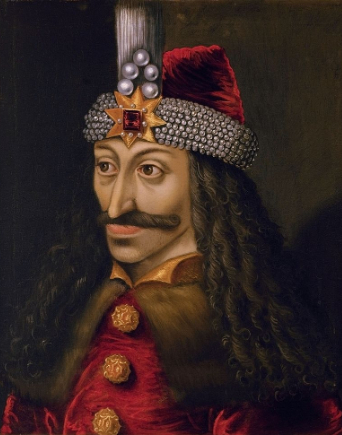
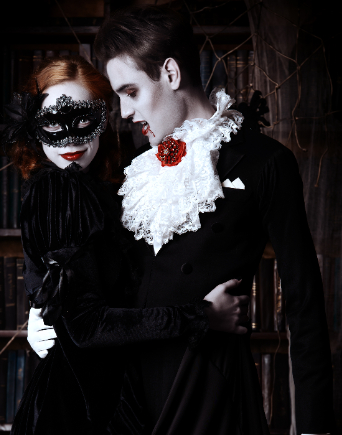
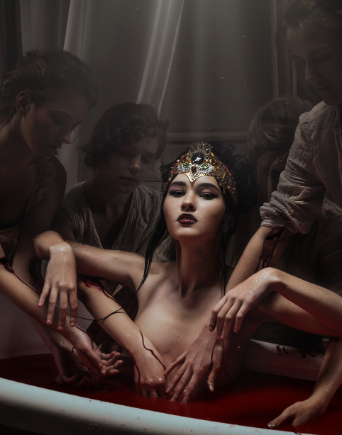
No Comments